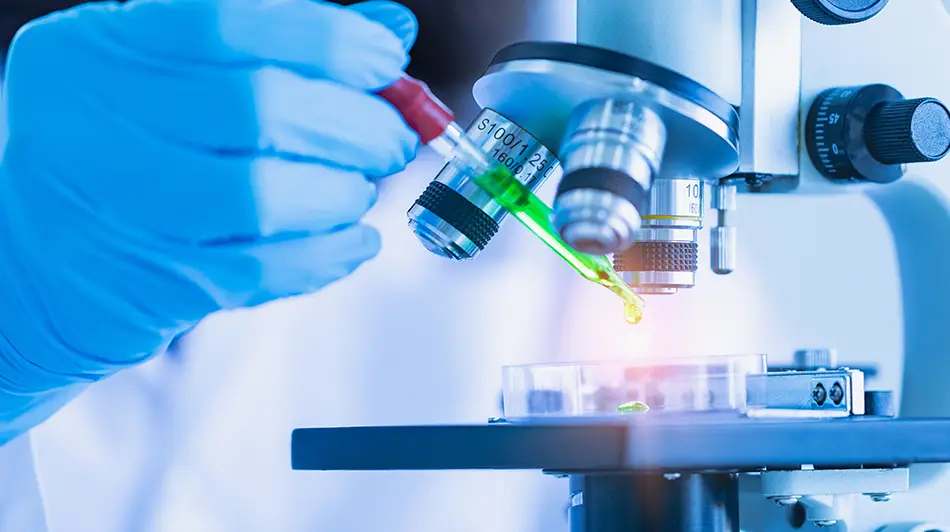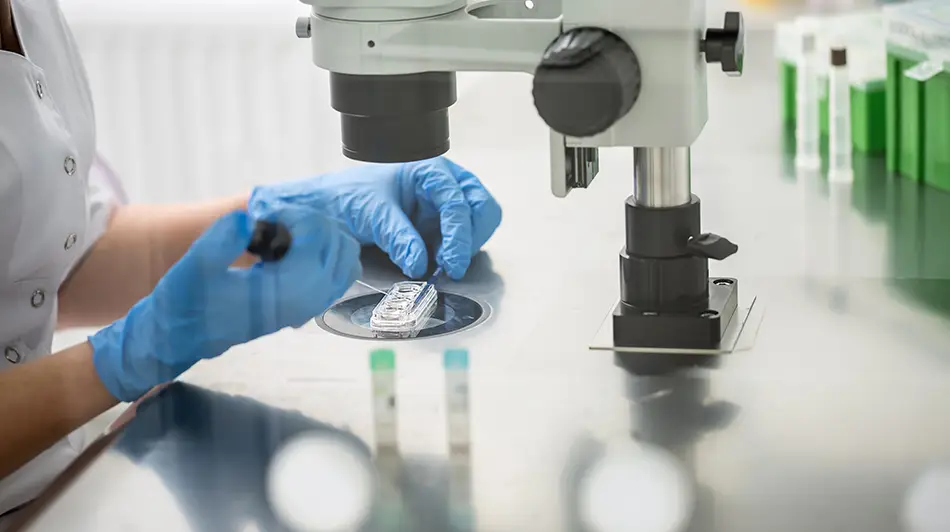Optimal floor vibration performance for precision life sciences and lab spaces
Achieve lab-standard vibration performance, instantly – with zero disruption or delays
In life sciences environments, floor vibration isn’t a background distraction noise, it’s a performance and operational risk. Whether it’s an office-to-lab conversions or next-gen life science research and healthcare facility, problematic floor vibration can derail equipment and test accuracy, delay progress and impact compliance. In a sector defined by precision, that’s a risk no life science project can afford to take.
Lab performance starts from the ground up; floor stability underpins it all. Imaging accuracy, sample reliability, test integrity. The list is mission-critical and long. But all too often, floor performance is overlooked in the unrelenting race to deliver gold-standard lab environments. That oversight can result in disrupted research, costly reworks and unusable spaces.
CALMFLOOR eliminates the compromise. CALMFLOOR’s world-first active mass damping (AMD) technology brings instant, precision vibration control to life sciences spaces and lab facilities, without the need for structural change or disruption to ongoing operations.

Enabling performance-critical environments from the ground up
CALMFLOOR AMDs deliver unrivalled floor vibration control to lab-standard performance levels across both new-build, existing and retrofit projects. This is essential in a sector where even imperceptible vibration can destabilise sensitive instruments, skew research outcomes or invalidate regulatory compliance.
Whether you’re developing specialist R&D labs, diagnostic testing centres or hybrid life sciences and healthcare campuses, CALMFLOOR delivers the optimal floor performance your teams need – instantly and sustainably.

The low-carbon, zero-disruption answer to lab-standard floor vibration control
Traditional vibration mitigation relies on carbon-heavy materials and invasive construction methods:, think deep slabs, steel or concrete reinforcements or heavyweight tuned mass dampers. These approaches are expensive, time-consuming, unsustainable and incompatible with most existing commercial floors.
CALMFLOOR’s compact AMD units weigh just 67kg (148lbs), installed in hours and reduce vibration by up to 90%, targeting the vibration hotspots precisely, with no downtime. Floors remain fully operational allowing you to avoid the costs, delays, embodied carbon impact and risk of over engineering.

Trusted by building owners, designers and engineers
CALMFLOOR AMDs are already transforming some of the most ambitious life sciences spaces. From speculative lab developments to office-to-lab conversions and specialist fit-outs, CALMFLOOR delivers flexible, future-proofed performance control and building data that meets the rapidly evolving needs of the sector.
In a market where speed to occupancy and adaptability are key, CALMFLOOR removes barriers to progress, supporting design freedom, enhancing building value and safeguarding the integrity of every test, experiment and research project carried out in the space.

Simulation, insight and guaranteed results
CALMFLOOR offers the only ‘try-before-you-buy’ vibration control resource on the market. Our on-site in-situ floor vibration demos give stakeholders all requisite data and the confidence that floor performance will meet every spec, every time.
Our simulation services go even further. We analyse your building’s modal properties, map out vibration behaviour to model and predict the precise impact of CALMFLOOR AMDs, so you can specify with total certainty. It’s a proven route to avoid overdesign, eliminate uncertainty and achieve compliance – straight out of the box.

Enjoy lab-standard-vibration performance in all lab spaces

Office-to-lab conversions

Specialist research and diagnostic labs

Modular and hybrid lab campuses

Innovation hubs and flexible R&D spaces

Healthcare facilities


